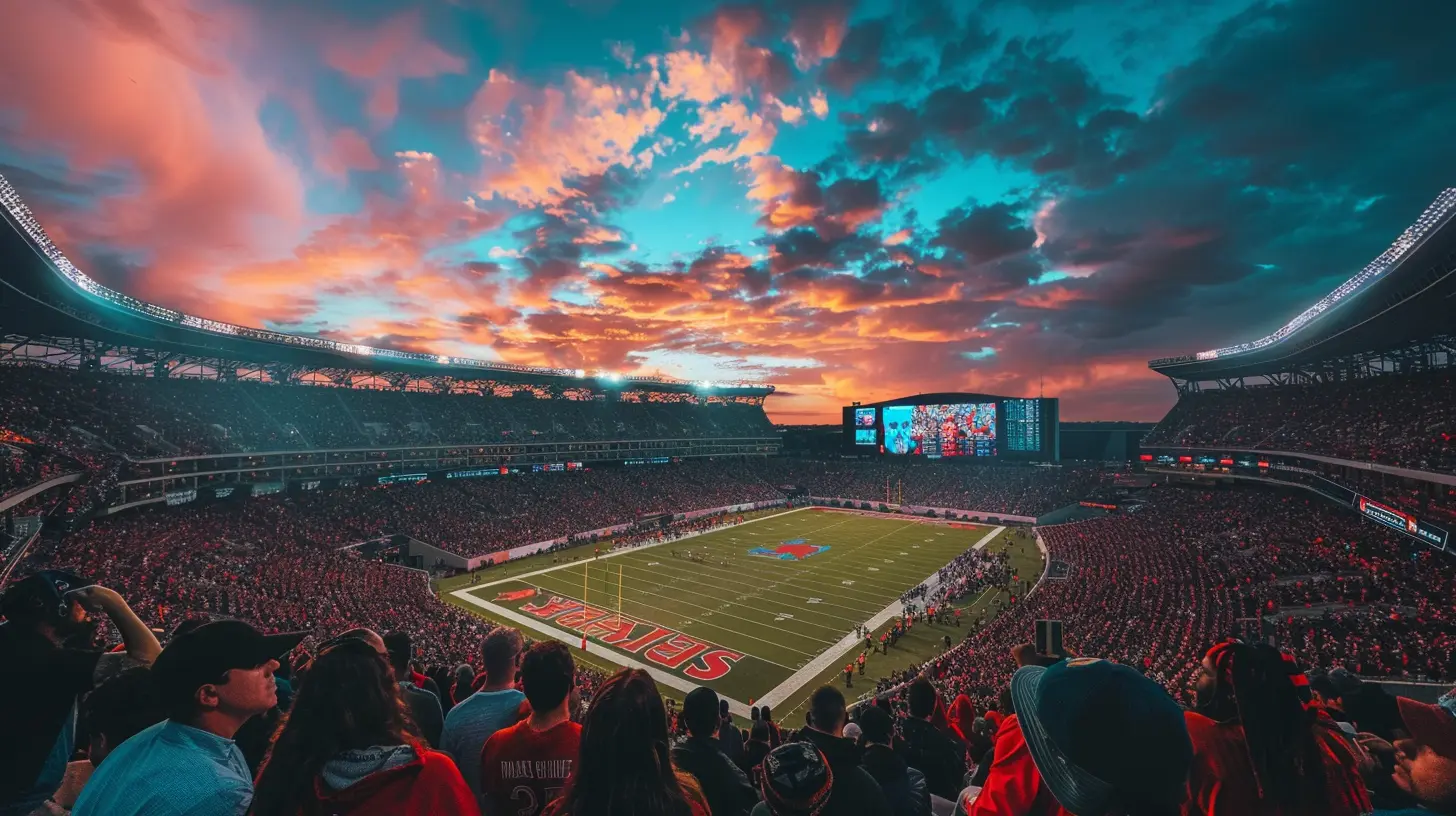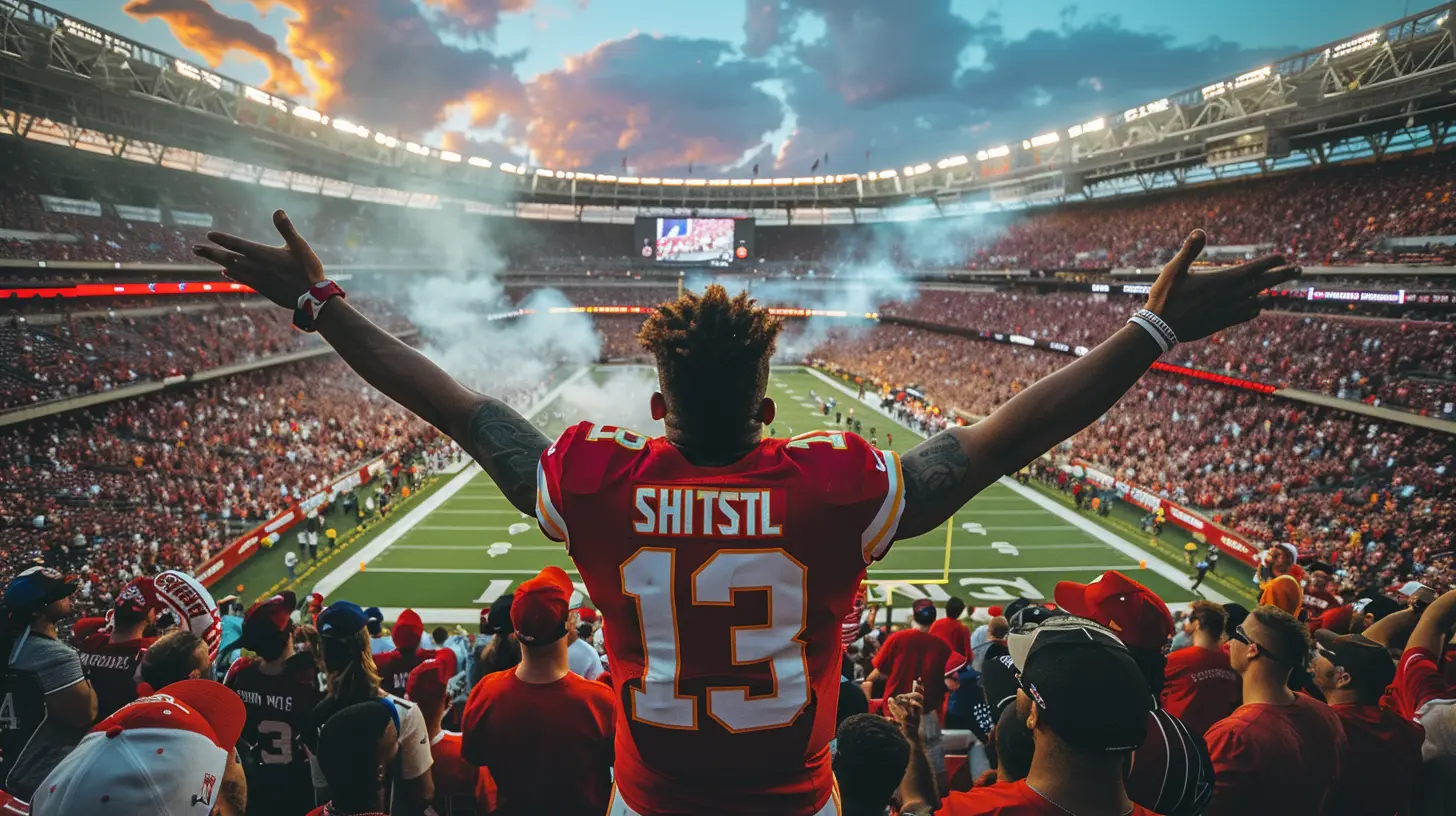19 March 2025
The world of sports is evolving, and with it, the way fans engage with their favorite teams, athletes, and events. Gone are the days when simply watching a game on TV or attending a live match was the primary form of fan interaction. Today, technology, social media, and innovative platforms have opened up new channels for fan engagement.
But what does the future hold? How will fans interact with the sports they love in the years to come? Let's dive deep into the trends shaping the future of fan engagement and what sports organizations should adopt to stay ahead of the curve.

The Evolution of Fan Engagement
Before we explore future trends, it’s essential to understand how fan engagement has evolved. A few decades ago, fan interaction was largely passive. You’d turn on the TV, watch the game, maybe read about it in the sports section of the newspaper, and that was about it. Occasionally, you’d attend a live event if you were lucky enough.However, the digital age has completely transformed the fan experience. With the rise of social media, streaming platforms, mobile apps, and other digital innovations, fans now have unlimited access to behind-the-scenes footage, athlete interviews, real-time updates, and more. It's no longer just about spectating; it's about being part of the action.
As we look to the future, this connection between fans and the sports world will only deepen. Let’s explore the trends poised to shape the next generation of fan engagement.

1. Augmented Reality (AR) and Virtual Reality (VR) Experiences
Imagine putting on a pair of VR goggles and being transported to a front-row seat at a live NBA game, even though you’re sitting on your couch. Sounds futuristic, right? Well, that future is closer than we think.Augmented Reality Enhancing the Fan Experience
AR allows fans to overlay digital elements onto their real-world environment. This could mean pointing your phone at a player on the field and immediately getting stats, historical data, or even a breakdown of their last play. AR can be a game-changer for live events, giving fans a deeper understanding and more personalized experience.Virtual Reality Bringing the Game to Your Home
VR, on the other hand, offers a fully immersive experience. Whether fans are attending a game in person or watching from home, VR can provide a 360-degree view of the action. It’s like teleporting yourself right into the stadium. Companies like Oculus and Sony are already exploring ways to bring these experiences to sports fans, and as the technology becomes more affordable, we’ll likely see widespread adoption.
2. The Rise of Fan Tokens and NFTs
You’ve probably heard the buzz surrounding cryptocurrencies and NFTs (non-fungible tokens). But how do these digital assets fit into the world of sports fan engagement? Spoiler alert: They’re going to be huge.Fan Tokens – Empowering Fans Through Ownership
Fan tokens are a form of cryptocurrency that allow fans to have a say in their favorite sports teams. For example, fans who hold these tokens can vote on team decisions like jersey designs, stadium music, or even minor player decisions. Essentially, it gives fans a sense of ownership and involvement in the inner workings of their beloved teams.NFTs – Digital Collectibles for the Modern Age
Remember when collecting trading cards was a thing? NFTs are the modern equivalent. These digital collectibles can be anything from unique player highlights to custom art featuring athletes. Unlike traditional memorabilia, NFTs are stored on the blockchain, making them verifiable and impossible to duplicate. As sports organizations and athletes begin to embrace NFTs, they’re becoming a new way for fans to show their loyalty and support.
3. Personalized Content and Tailored Experiences
We live in an age where personalization is everything. Think about it—your Netflix account recommends shows based on your viewing habits, and your Spotify playlists are curated just for you. Sports fan engagement is heading in the same direction.Hyper-Personalized Content for Sports Fans
Imagine receiving push notifications that aren’t just about the game score but are tailored to your favorite player’s performance or a specific stat you track. Sports teams and broadcasters are leveraging data analytics to create hyper-personalized content, ensuring that every fan gets exactly what they want.AI-Powered Engagement
Artificial intelligence (AI) is also playing a significant role. AI can analyze fan behavior and preferences to deliver personalized recommendations, from the type of content you consume to the merchandise you might like. For example, if you frequently search for highlights of a particular player, AI algorithms can ensure that you see similar content in the future. It’s all about making the fan experience as engaging and relevant as possible.4. Social Media as the Ultimate Fan Engagement Tool
Social media platforms like Twitter, Instagram, and TikTok have become indispensable tools for fan engagement. They offer a direct line of communication between fans, athletes, and teams. But as social media continues to evolve, so too will its role in sports.Real-Time Interaction
One of the biggest advantages of social media is the ability to engage in real-time. Whether it’s live-tweeting a game or interacting with players on Instagram, fans can now be part of the conversation as it unfolds. This level of immediacy is something that traditional media can’t offer.The Rise of Short-Form, Interactive Content
Platforms like TikTok and Instagram Reels are changing how sports content is consumed. Short, snappy, and engaging videos are the new currency of fan interaction. Athletes and teams are embracing this trend by posting behind-the-scenes content, challenges, and viral trends that keep fans hooked.5. Esports and Gamification – The New Frontier of Fan Engagement
Esports has exploded in popularity over the past few years, and it's not slowing down anytime soon. What was once a niche market is now a mainstream industry, with millions of fans tuning in to watch their favorite gamers compete. But esports doesn’t just represent a new form of entertainment; it’s also a valuable opportunity for fan engagement.Bridging the Gap Between Traditional Sports and Esports
We’re already seeing collaborations between traditional sports teams and esports organizations. Many professional sports teams now have their own esports divisions, blurring the lines between the two worlds. This crossover offers new ways for fans to engage, whether through watching esports matches or participating in gamified experiences tied to their favorite sports.Gamification of Sports
Gamification isn’t limited to just esports. Traditional sports are also embracing game-like elements to enhance fan engagement. For example, fantasy sports leagues allow fans to become virtual team managers, while interactive apps let fans predict game outcomes and earn rewards. The key here is making fans feel like active participants rather than just passive observers.6. Sustainability and Social Responsibility – A New Kind of Engagement
In recent years, there has been a growing emphasis on sustainability and social responsibility in sports. Fans are increasingly looking to their favorite teams and athletes to take a stand on important social and environmental issues. This shift is influencing how organizations engage with their fan base.Supporting Causes Through Sports
Many teams are now using their platform to promote sustainability initiatives, partnering with eco-friendly brands, or implementing green practices in stadiums. Fans are encouraged to participate in these efforts, whether through donations, volunteering, or simply supporting teams that align with their values.Athletes as Advocates
Athletes have long been influencers, but now they are becoming advocates for social change. From raising awareness about racial inequality to promoting mental health, athletes are using their platforms to engage with fans on a deeper, more meaningful level. This type of engagement goes beyond the game and fosters a stronger connection between fans and the athletes they admire.7. The Power of Data – Understanding Fan Behavior
Data is the new gold in the world of sports fan engagement. Teams and organizations are collecting massive amounts of data to better understand their fan base. But how is this data being used?Enhancing the In-Stadium Experience
By tracking fan behavior, teams can tailor the in-stadium experience to individual preferences. This could mean offering personalized promotions, improving the layout of the stadium based on foot traffic patterns, or even adjusting game-day entertainment to suit fan demographics.Predictive Analytics for Deeper Engagement
Data isn’t just about understanding the present; it’s about predicting the future. Predictive analytics can help teams forecast fan behavior, from ticket sales to merchandise purchases. By anticipating what fans want, organizations can create more engaging and personalized experiences.Conclusion: The Future Is Now
Fan engagement in the sports world is undergoing a revolution, driven by technology, data, and the ever-growing demand for personalized experiences. Whether it’s through AR and VR, fan tokens, social media, or sustainability efforts, the future of fan engagement is all about making fans feel more connected to the game they love.For sports organizations, the key to staying ahead will be adopting these trends early and finding innovative ways to integrate them into the fan experience. The future of fan engagement is bright, and we’re just getting started.









Vesperos Black
This article hits the mark on fan engagement trends! Embracing technology and community interaction is crucial for teams. It’s exciting to see how innovations can enhance the fan experience and create lasting connections with sports enthusiasts.
March 30, 2025 at 4:48 AM